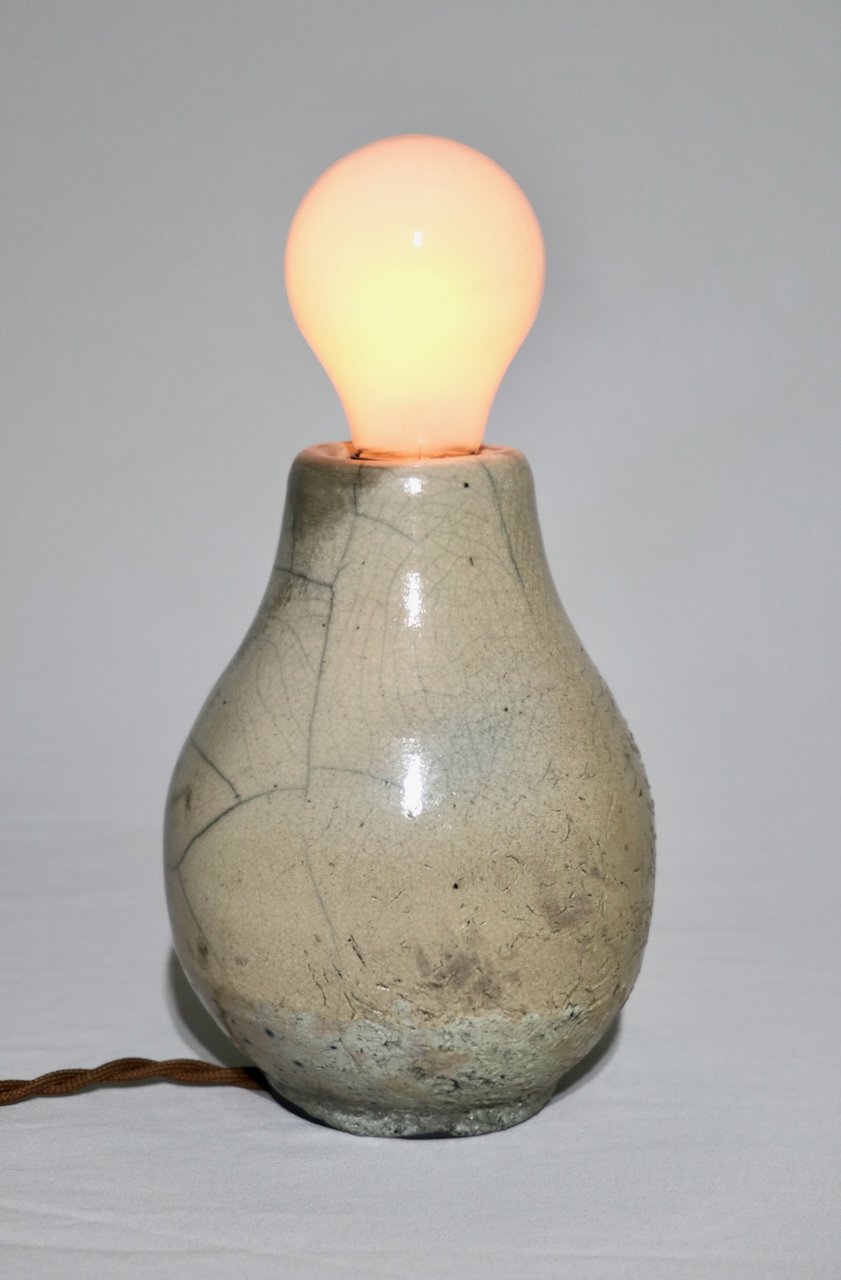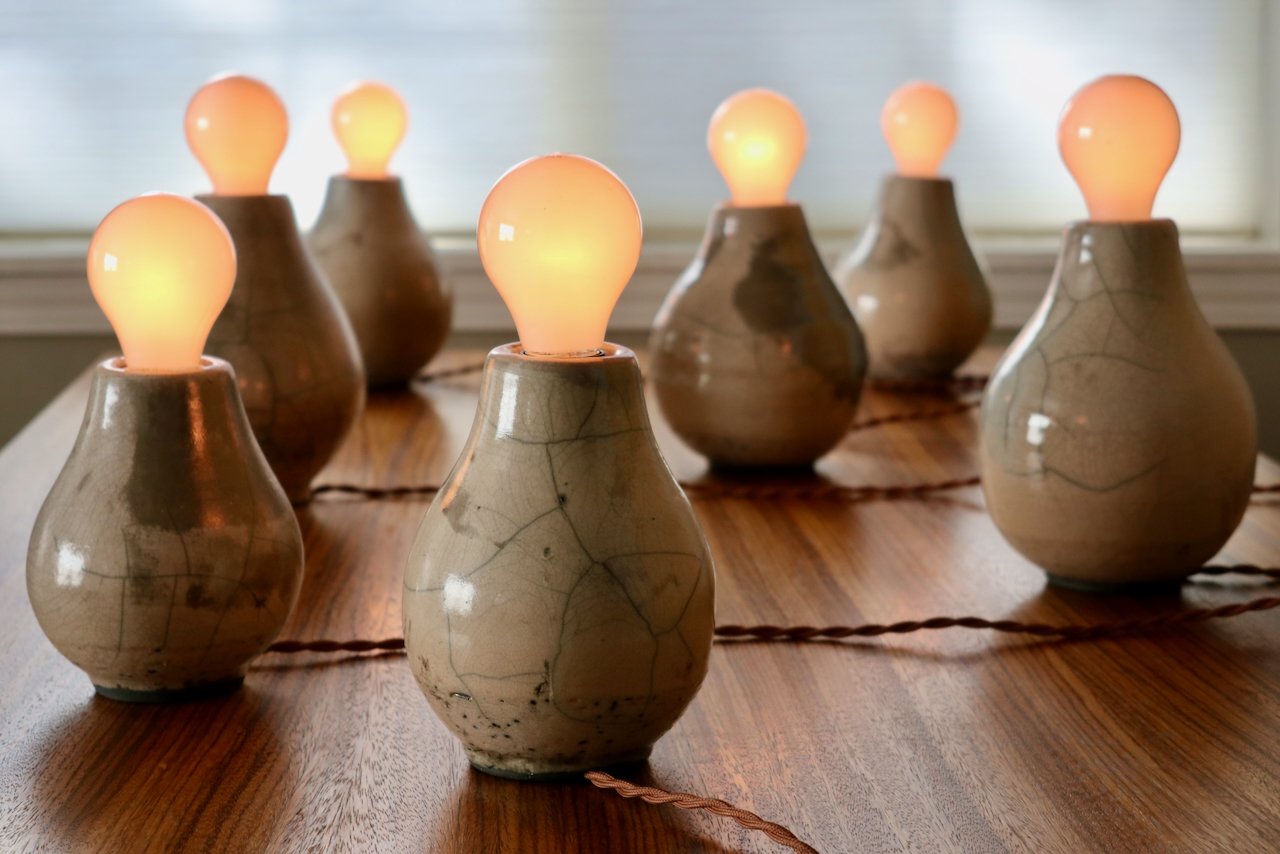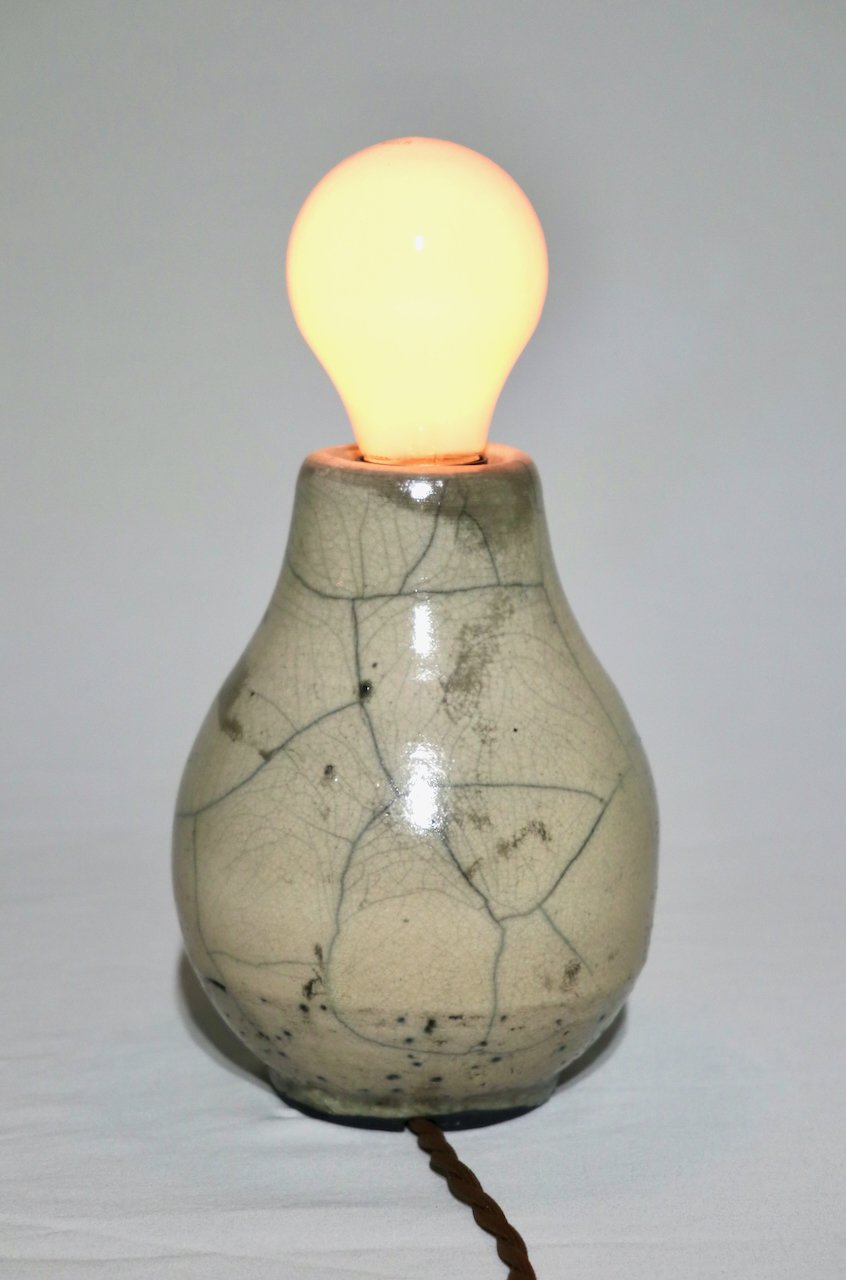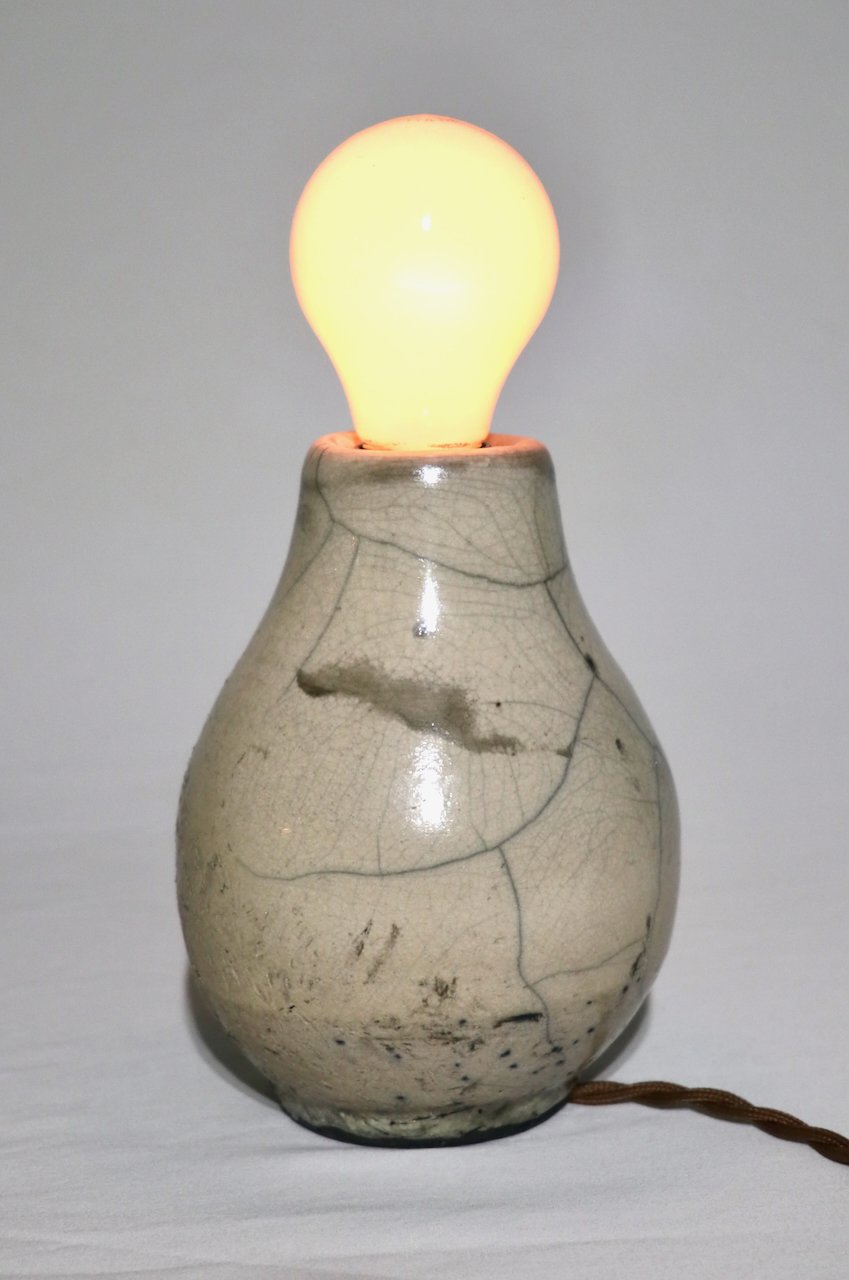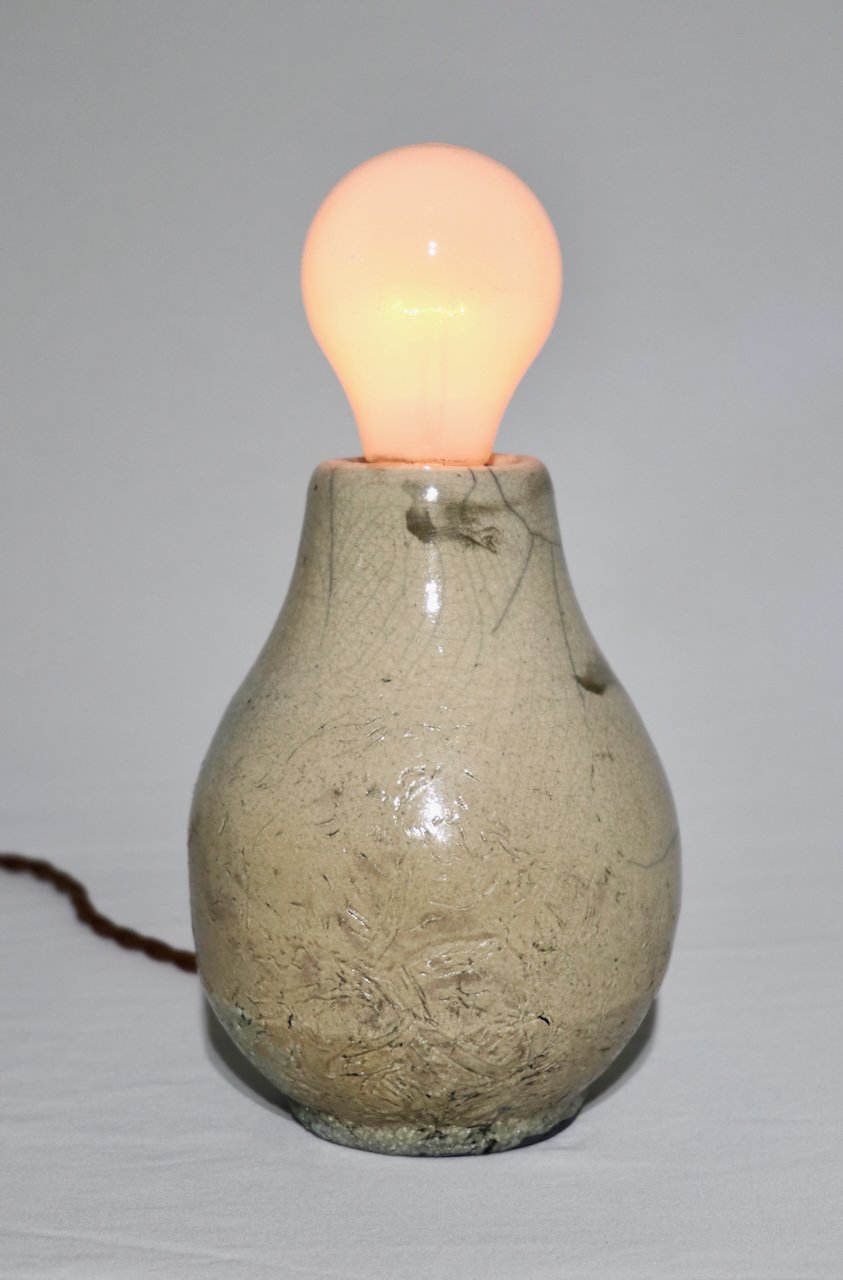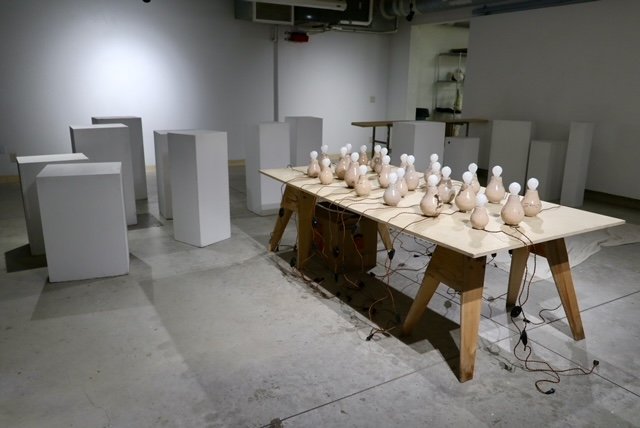Lil Bulby #3 by Roman de Salvo
Lil Bulby v2.072203, 2022. Currently in EXHIBITION, AVAILABLE but will be sent AFTER 8 DECEMBER.
Raku fired ceramic, incandescent light with dimmer, lamp hardware, 9.5 x 4.5 x 4.5 in.
Limited edition lamps
Photographed from 4 angles, each lamp unique.
Lil Bulby v2.072203, 2022. Currently in EXHIBITION, AVAILABLE but will be sent AFTER 8 DECEMBER.
Raku fired ceramic, incandescent light with dimmer, lamp hardware, 9.5 x 4.5 x 4.5 in.
Limited edition lamps
Photographed from 4 angles, each lamp unique.
Lil Bulby v2.072203, 2022. Currently in EXHIBITION, AVAILABLE but will be sent AFTER 8 DECEMBER.
Raku fired ceramic, incandescent light with dimmer, lamp hardware, 9.5 x 4.5 x 4.5 in.
Limited edition lamps
Photographed from 4 angles, each lamp unique.
ROMAN DE SALVO
SHORT BIO
Roman de Salvo is a sculptor and public artist whose work infuses the everyday with surprise and intrigue. His art is characterized by an inventive use of ordinary materials and objects, often involving energetic phenomena such as wind, water, fire, electricity, and audience participation. Noteworthy exhibitions include the 2000 Biennial Exhibition at the Whitney Museum of American Art, the 2002 California Biennial at the Orange County Museum of Art and Chain Reaction: Rube Goldberg and Contemporary Art at Williams and Skidmore Colleges. Of numerous public art commissions,The Riparium at Ruocco Park in San Diego bears mentioning. Born in San Francisco in 1965 and raised in Reno, Nevada, de Salvo received the B.F.A. in Sculpture in 1990 from the California College of Arts & Crafts in Oakland and the M.F.A. in Visual Arts in 1995 from the University of California, San Diego. He has been affiliated with the Sierra Nevada College/UNR Lake Tahoe MFA-IA since 2016. In 2022, de Salvo relocated to Reno.
ROMAN DE SALVO ARTIST STATEMENT
About Lil Bulby
Last winter, my wife moved to Reno ahead of me while I stayed behind in San Diego to pack up our belongings and sell the house that was our home for over two decades. Eventually, after two or three months, the house was pretty much empty, except for some luggage, a mattress on the basement floor and a small, simple lamp beside it that I had made a couple years earlier.
“Lil Bulby,” as I call it, is basically a table lamp, but without the customary lamp shade and exposed hardware. The shape of the base is derived from the shape of the bulb. As its creator, I was proud of its minimalist elegance. But it was as its user, living with it during those nights of isolation on my basement floor, that I discovered surprising comfort in the Lil Bulby. It was as if I had become mesmerized by its formal sensuality. And with the incandescent bulb dimmed way down to a candle-like intensity, it cast a warm, primordial glow in the space that I felt was nourishing to my circadian rhythm and by extension, to my very being.
It dawned on me that the comfort I was receiving from the Lil Bulby was actually rather profound. But this was not the sort of experience that I could imagine in an art gallery. As an artist, if I wanted to give access to this experience, I needed to make more Lil Bulbies so that more people could live with them. I resolved that once I got resettled, I would pursue Lil Bulby production as my first project.
I turned to the potter’s wheel for the production of this series. In my youth, I was a dedicated and proficient potter. But I hadn’t used a potter’s wheel in 33 years. Remarkably, when I returned to it, I found that my skills were up to the task. My feelings for the medium were renewed and production ensued.
For the finish, I was drawn to the raku process. I hadn’t done raku before, but was aware of the traditions and the aesthetic. All ceramics are fired, but the raku process tends to yield results that actually look like they’ve been through a fire. This is imparted by the ceramic object being removed from a hot kiln at such heat that its glazed surface is actually molten, and then being abruptly dropped into a container of dry organic matter, such as dead leaves, that in turn catch fire before being smothered and allowed to smolder around the object. As the object undergoes thermal shock, cracks in the glaze array across the surface and are infused with smoke from the smoldering leaves. Thus, the object actually and evidently has been through a fire.
So I chose the raku process as a way of connecting with the use of fire as a light source. I think of the old, cozy way humans have illuminated the evening throughout history. This Lil Bulby series provides an electric kinship with that history.
Roman de Salvo
Reno, November 2022


